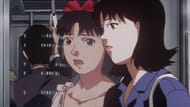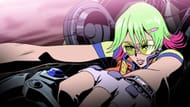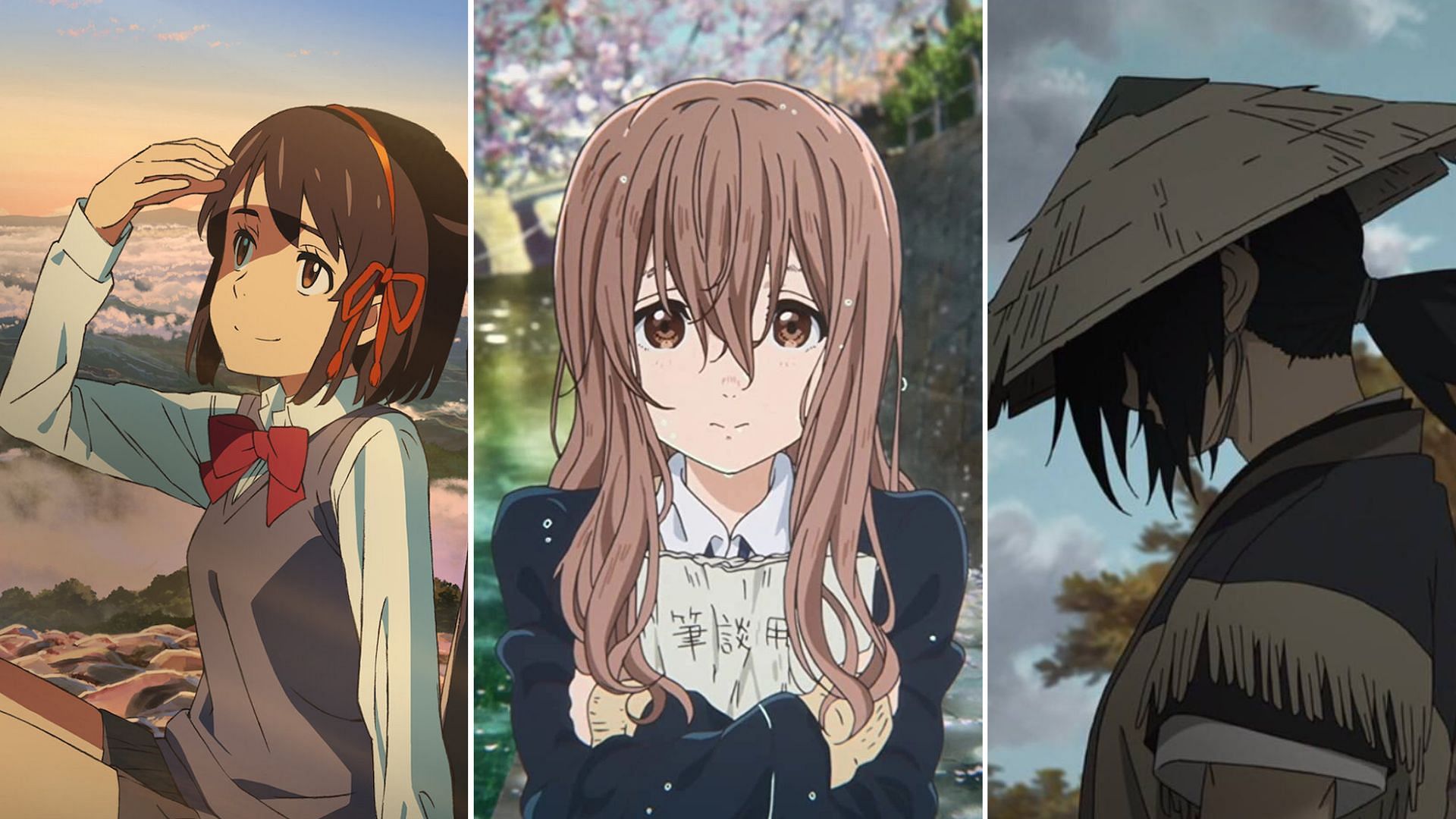Anime feature films showcase bold artistic visions and compelling stories for audiences around the world. While Hayao Miyazaki's Studio Ghibli remains a hallmark of animated cinema with masterpieces like Spirited Away and Princess Mononoke, equally brilliant works come from other talented directors and studios.
Expanding beyond fantasy or family films associated with Ghibli, non-Ghibli anime movies explore nearly any topic imaginable through various genres and animation techniques. These tireless creators push the cinematic medium to new heights with experimental visuals, philosophical themes, and emotional character writing.
Their passion shines through in beloved classics as well as recent additions destined for greatness. Whether you seek laughter, tears, adrenaline rushes, or existential questions on the human condition, these 11 non-Ghibli anime movies deliver spectacular journeys to remember.
11 must-watch non-Ghibli anime films you’ll love
1) Your Name

Boy meets girl takes a magical twist in Makoto Shinkai's worldwide phenomenon Your Name, which intertwines city teenager Taki and rural maiden Mitsuha through inexplicable body swapping. They bungle through awkward body swaps before uncovering a deeper soulmate bond.
When their memories fade upon returning to their own lives, Taki races against time to reunite with Mitsuha across space and fate itself. Blending humor with sentimentality, Your Name finds magic in longing and the threads tying kindred spirits beyond place or gender.
Shinkai crafts an achingly romantic tale that became one of anime's highest-grossing films ever through capturing universally relatable desires for belonging. Beyond the comedy and romance, this non-Ghibli anime shines with stunning visuals and heartfelt writing.
2) A Silent Voice

Anime tackling weighty real-world issues are rare enough without handling them as masterfully as 2016's anti-bullying drama A Silent Voice. This emotional journey follows Shōya, who severely bullies deaf classmate Shōko until she transfers from their elementary school.
Still ostracized for his past cruelty years later, teenage Shōya attempts reconciling with Shōko, even as deep self-loathing and anxiety plague them both. Such a premise could easily demonize either former victim or bully, yet director Naoko Yamada paints multifaceted characters shaped by societal prejudice.
Shōya grapples intensely with his guilt and perceived worthlessness alongside suicidal depression. Shōko harbors her own survivor's guilt despite persistent compassion. Rather than offering simple answers, it crafts an empathetic redemption tale rooted in confronting one's flaws and understanding different struggles.
3) Sword of the Stranger

For pure action spectacle, Sword of the Stranger stands tall with legendary fight choreography. When young Kotarō and his dog Tobimaru flee mysterious Ming assassins, ronin Nanashi reluctantly protects them on their journey, uncovering conspiracies behind Kotarō's heritage.
While interesting lore spices the plot, animators showcase their talents through mesmerizing combat showdowns. Blades slash warring factions with faithful physics while blood sprays tangibly. Director Masahiro Andō slices between multiple duels at once during the epic climax to build dizzying stakes.
The final confrontation's brutal desperation and severed limbs cement the film's unmatched intensity. Beyond the story, Sword of the Stranger delivers sheer animation skill, making viewers feel every cut and broken bone.
4) The Girl Who Leapt Through Time

Time travel fuels escapist fun in Hosoda's 2006 gem The Girl Who Leapt Through Time, grounded in classic anime charm. After ordinary high schooler Makoto Konno discovers she can literally "leap" through time and relive events, she gleefully fixes failed tests or awkward incidents.
But revisiting past choices strains the space-time continuum and makes Makoto reconsider her actions. Less sci-fi adventure than coming-of-age commentary, the film follows Makoto maturing from selfish exploitation of her powers to understanding their dangerous impacts.
She attempts to save lost loved ones before realizing the necessity of loss in living. Hosoda examines adolescent aimlessness and adulthood responsibility through the imaginative lens of time jumping with humor and empathy intact. An enduring fan favorite, this non-Ghibli anime resonates across generations.
5) Promare

In an alternate world overrun by deadly "Burnish" pyrokinetic humans who control flames, rescue worker and Burnish-sympathizer Galo Thymos eventually allies with the rebellious Burnish group Mad Burnish to fight the oppressive anti-Burnish military unit led by Vulcan.
Cue insane mecha/motorcycle battles, teams trading crass insults, a bombastic techno soundtrack, and liberal weaponization of fire. Beneath the surface, Promare tackles thought-provoking themes like prejudice and found family with surprising nuance amid the visual overload.
But spectacle remains the highlight. Trigger flexes their animation talents through incendiary action showcases with their most unrestrained, flamboyant art design yet. Silly to the point of satire yet epic in emotion and scale, this non-Ghibli anime sets the screen ablaze.
6) Paprika

The late Satoshi Kon established himself as an artistic visionary director with films tackling surreal magical realism, intricate storyboarding, and complex female heroines. His 2006 masterpiece Paprika sees him masterfully blending all those strengths.
Psychiatrists use the DC Mini, a device that lets them enter patients' dreams, until several get stolen for sinister use. Eccentric scientist Dr. Paprika and her alter ego, psychiatrist Dr. Chiba, dive into twisted dream worlds to catch the culprit.
Surreal dream logic allows Kon's imagination to run wild through landscapes morphing via beautiful, disorienting editing and animation. Beneath the surrealism, Kon delivers a heartfelt message on fantasy’s value, anchored by the complex, compassionate Paprika/Chiba.
7) Perfect Blue

Former J-pop idol singer Mima Kirigoe struggles to be taken seriously as an actress, especially with an obsessed fan stalking her. As Mima's sense of reality fractures and a string of murders follows her, she confronts questions of who she is as a performer and person.
Kon overlays fantasy with a gritty realism in depicting Mima's exploitation across the entertainment industry and society. Rapid-fire editing jumps between Mima's fraying perspectives and builds an atmosphere of claustrophobic dread long before the bloody finale.
Standing the test of time through subsequent reality-bending thrillers it inspired, Perfect Blue packs a disorienting punch as Mima's sanity shatters before our eyes. This directorial debut established Satoshi Kon as a master of psychological storytelling in animation.
8) Wolf Children

Mamoru Hosoda returned to feature films with 2012's achingly tender Wolf Children, which follows single mother Hana secretly raising her two shapeshifter wolf children, Ame and Yuki, after their wolfman father dies.
Struggling to blend her unusual family into normal society, Hana moves them to the countryside, where the siblings follow diverging paths in exploring their hybrid identities. Hosoda conveys joy and sorrow through gentle emotional storytelling and gorgeous scenery.
Nature becomes a sanctuary where wolf children can run free. When Ame and Yuki grow older, a symbolic rift forms between them, with Yuki longing to blend in with humans and Ame clinging to wolf freedom. Wolf Children explores family bonds against adversity through fable-like storybook drama.
9) Summer Wars

Director Mamoru Hosoda blends family themes with virtual worlds in 2009's Summer Wars. Math whiz Kenji accompanies his friend Natsuki to her grandmother's 90th birthday party, but the celebration gets disrupted when internet hacking scheme OZ threatens global connectivity.
Their clan bands together to combat this crisis in cyberspace and the real world. Blending Japan's deep web culture and importance of family legacy with the visual-forward internet setting, Hosoda explores millennium-era anxieties over technological co-dependence through accessible blockbuster storytelling.
Some drama gets lost in OZ's bright, overwhelming battles. Still, the clan bonds and themes of reconciling traditions with globalized internet futures resonate beautifully. Summer Wars touches on the most human concerns even in its most tech-forward ideas.
10) Redline

Renowned for taking seven years to complete with over 100,000 hand-drawn frames in total, animation studio Madhouse renders blistering races across stark deserts or tentacled alien gambling dens with breathtaking fluidity.
Gearhead JP enters the deadly Redline race held on the militarized planet Roboworld while navigating romantic schemes, military sabotage, and vehicle-transforming magic powers. Story plays second fiddle, though, serving to propel the gasp-inducing speeds and designate finished lines during illegal death matches.
Scant worldbuilding also leaves some elements unexplained but arguably enhances the punk spirit. Bursting with rebels just crazy enough to rocket down technicolor HG Wells-esque landscapes, charismatic freak JP epitomizes the film's chair-gripping "anything goes" attitude.
11) In This Corner of the World

An intimate yet epic wartime drama, 2016’s In This Corner of the World anime chronicles ordinary life persevering in Kure City during WWII bombings and food shortages. Newlywed Suzu Urano adapts to her new family and community through bittersweet hardship and small daily joys.
Amid war, Katabuchi highlights Kure’s communal spirit through slice-of-life moments like sharing food and crafting dolls. However, as casualties mount, traumatic air raids on Kure punctuate Suzu’s cherished memories formed in hardship’s quiet moments.
Katabuchi spent a decade on this passion project, blending detailed art of Hiroshima’s landscapes with heartfelt empathy for wartime civilians. Balancing hardship with everyday heroism, In This Corner of the World tells an essential wartime story through pure-hearted honesty.
Conclusion
Beyond acclaimed classics from Studio Ghibli lie so many remarkable anime movies waiting to be cherished. The non-Ghibli anime movies here represent only a glimpse at the diverse stories Japanese animation has visualized through its cinematic legacy.
Whether shining light on marginalized experiences, sparking imaginations with surreal fantasy-scapes, or thrilling viewers through the language of speed and blades, non-Ghibli anime movies continue pushing artistic and thematic boundaries for the medium.
Related links:
- 10 best anime to watch with friends
- 10 best anime to watch before you die
- 10 best unforgettable anime series that you should try
- 10 best canon anime movies, ranked

